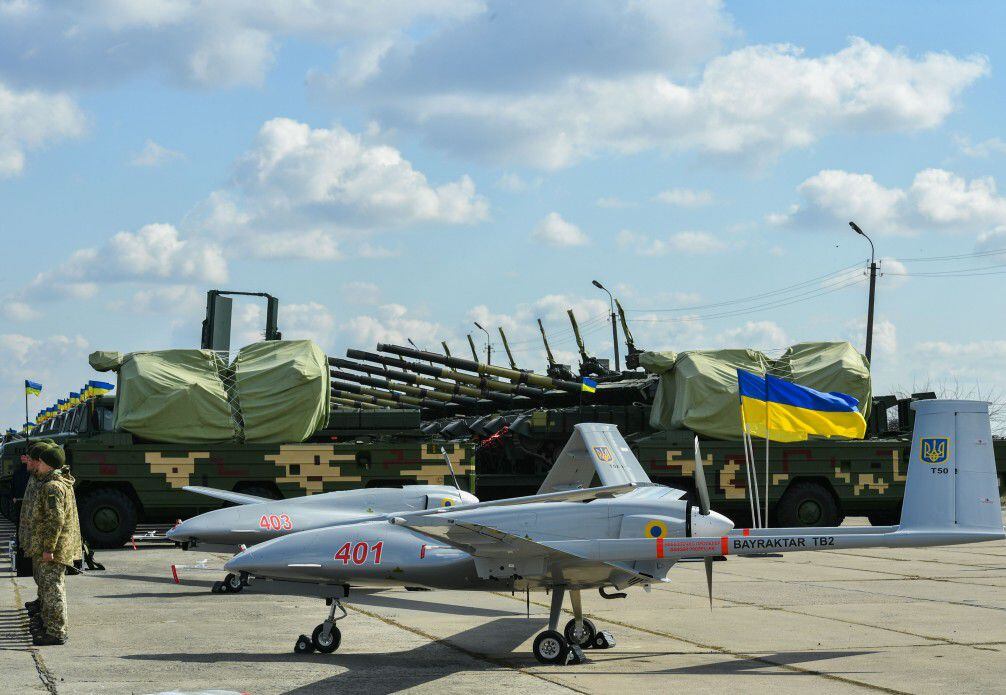

Amid the Russian invasion of Ukraine, a small portion of the defenders’ arsenal has had a disproportionate effect — Ukraine’s handful of Bayraktar TB2 armed drones.
Videos of their exploits have millions of views. They’ve destroyed surface-to-air missile launchers and logistics trains. They’ve inspired songs and are a common refrain in videos taunting the Russian invaders.
Despite their small number — around 20, according to pre-war comments made to Al-Monitor — the drones have been heavily utilized, according to Ukrainian officials. Russia, on the other hand, claims it has shot down some of the drones.
According to Stijin Mitzer, an open-source intelligence analyst, the small Turkish-made drones have destroyed at least 32 Russian vehicles since war broke out last week, though it’s impossible to independently confirm the total number of vehicles they’ve destroyed.
An expert on Russian drone warfare, Samuel Bendett of the CNA think tank, explained to Military Times that even the drones’ limited successes show that Russia is failing to implement its own air defense strategies. He added that Russia studied the lessons learned by Armenia in last year’s war with Azerbaijan, which saw the latter nation decimate Armenian positions and vehicles with Bayraktar drones and loitering munitions.
Perhaps the “biggest lesson” of that conflict, Bendett said, was that slow, low flying drones like the Bayraktar are effective against outdated air defense systems. Russian planners were confident that their force structure, which prioritizes modernized, layered air defense, would be able to prevent such a massacre — but “we’re not seeing…what Russians have advertised,” Bendett said.
Russian units are usually arrayed in battalion tactical groups, BTGs, with layered air defense and anti-drone capacity, said Bendett. But the forward elements of Russian forces have failed to operate as BTGs in Ukraine, frequently leaving behind their air defense assets “in inexplicable fashion,” he added.
“[In Ukraine], Russia doesn’t seem to display the very tactics, techniques and procedures that it’s practiced for years and sought to perfect in Syria…[to provide] adequate cover to its ground forces,” he said.
Bendett also pointed towards “the mythology of the Bayraktar” and how “Ukraine is winning the information war.”
“For all the Russian military talk about winning information war, they seem to be losing, and the videos of Bayraktars striking what appears to be Russian targets is feeding into that [Ukrainian] information campaign,” he said.
Bendett believes that the days of Bayraktar strikes are limited, though, should Russia reorganize its advance.
“If the Russian military reorganizes — if it sends in the BTGs, if it sends in adequate air defense capability, if it sends in its [electronic warfare] forces…it would become increasingly more difficult for Bayraktars to operate in an uncontested fashion,” said the drone expert. “They were definitely aware of the threat. They definitely practiced against the threat.”
And even should the Russians recover and counter the drone threat, he noted, “they were supposed to eliminate a lot of Ukrainian air defense capability from the…first hours of the campaign.” That includes the air bases where the drones are stored, fueled and equipped.
A portion of that responsibility, according to other experts and U.S. officials who spoke with Reuters, lies with the conspicuous absence of the Russian Air Force over the skies of Ukraine.
“The fact that there may be surviving [Bayraktars] somewhere is an embarrassment [to Russia],” said Bendett. “Clearly.”
Davis Winkie is a staff reporter covering the Army. He originally joined Military Times as a reporting intern in 2020. Before journalism, Davis worked as a military historian. He is also a human resources officer in the Army National Guard.



Be the first to comment